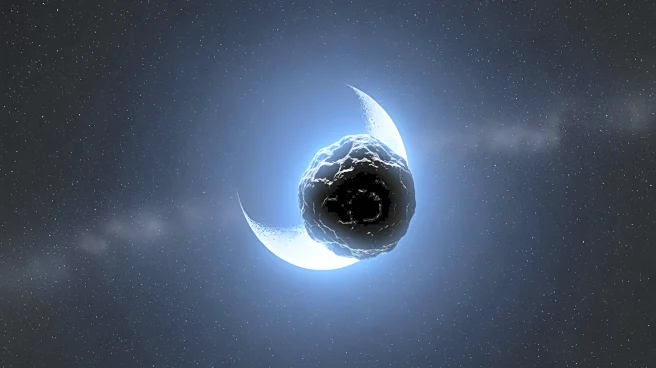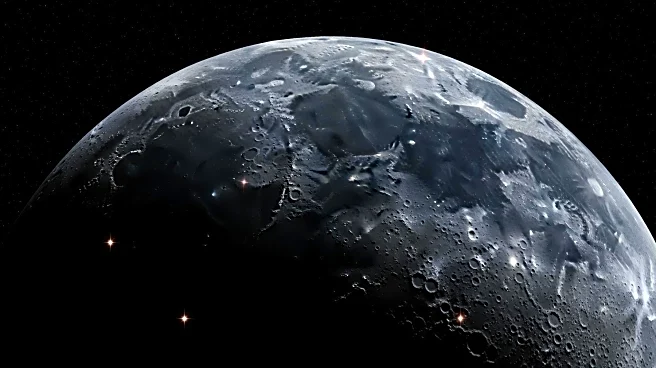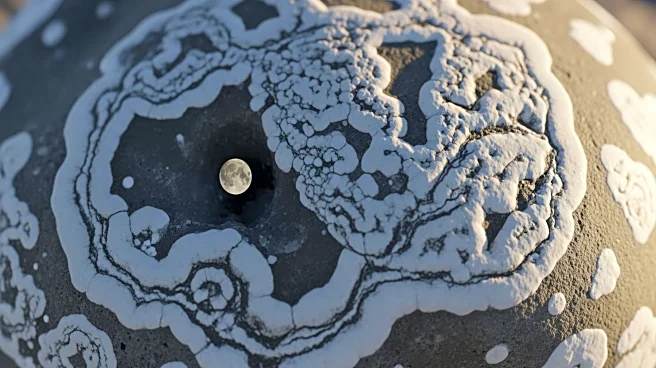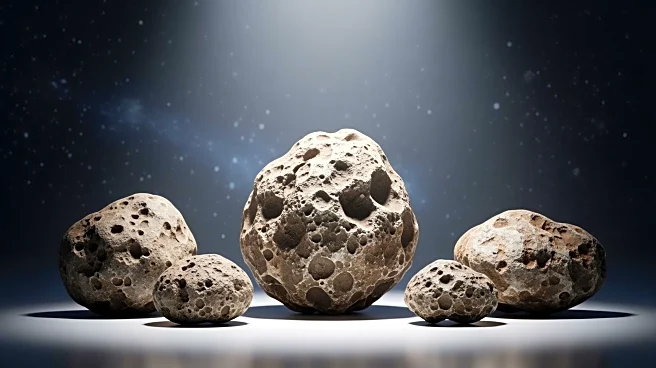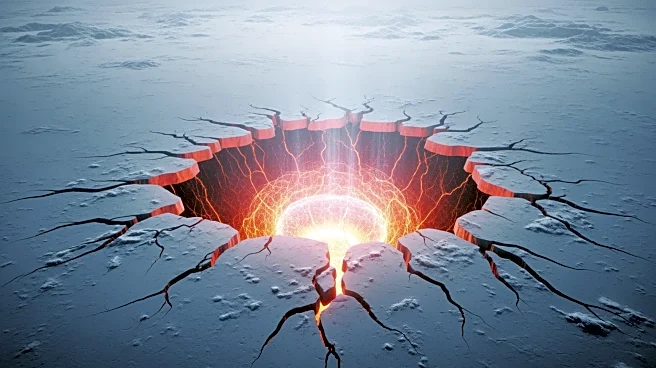What's Happening?
Researchers at Heriot-Watt University have confirmed the discovery of a massive asteroid impact crater beneath the Atlantic Ocean floor, known as the Nadir Crater. This crater, located 300 meters below
the seabed off the coast of Guinea, spans approximately 9 kilometers in width and is believed to have been formed by an asteroid impact around 66 million years ago. The timing of this impact coincides with the event widely associated with the extinction of the dinosaurs. The discovery was made by Dr. Uisdean Nicholson, who identified the crater while analyzing seismic data. The Nadir Crater provides a unique opportunity for scientists to study the aftermath of asteroid impacts, as it remains largely intact beneath the ocean, unlike many land-based craters that have been eroded over time.
Why It's Important?
The discovery of the Nadir Crater is significant as it offers new insights into the events surrounding the mass extinction of the dinosaurs. By studying this well-preserved underwater crater, scientists can test hypotheses about the impact dynamics and geological processes that follow such catastrophic events. The crater's preservation allows researchers to examine the effects of asteroid impacts on the Earth's geology and ecosystems, potentially refining models of how these events contribute to mass extinctions. This research could enhance our understanding of Earth's history and the role of asteroid impacts in shaping the planet's biological and geological evolution.
What's Next?
Researchers plan to conduct a drilling expedition to extract core samples from the seabed surrounding the Nadir Crater. These samples will provide detailed information about the shock pressures and geological changes resulting from the asteroid impact. The data obtained from these cores will help scientists refine their models of crater formation and evolution, offering deeper insights into the processes that occur during and after asteroid impacts. This research could also inform future studies on planetary defense and the potential risks posed by asteroid impacts.
Beyond the Headlines
The discovery of the Nadir Crater highlights the importance of underwater geological research in uncovering Earth's hidden history. It underscores the potential for oceanic studies to reveal significant geological events that have shaped the planet's past. The preservation of the crater beneath the ocean floor offers a rare opportunity to study an impact site that has remained largely untouched by erosion, providing a clearer picture of the aftermath of asteroid impacts. This research could also contribute to broader discussions on planetary defense and the need for strategies to mitigate the risks of future asteroid impacts.


